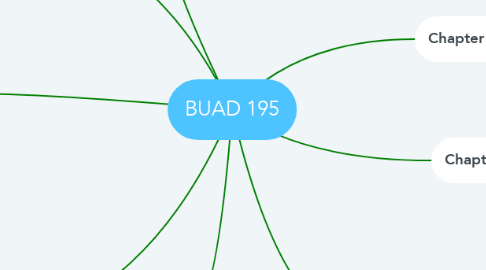BUAD 195
by Kan brar

1. Chapter 1
2. Chapter 5
3. Chapter 6
4. Chapter 7
5. Chapter 8
6. 3 Types of Businesses
7. Sole Proprietorship
8. Fixed Cost
9. Variable Cost
10. Contribution Margin (CM)
11. Break Even Point (BEP) (Fixed Costs/CM per Unit)
12. Target Profit Point (Fixed Costs +Required Profit/CM per Unit)
13. Contribution Margin Ratio (CMR) (CM per unit/Selling Price)
14. Break even in $ of Sales (Fixed Costs/CMR)
15. Degree of Operating Leverage (DOL) (CM/EBIT)
16. Degree of Financial Leverage (DFL) (EBIT/EBT)
17. Degree of Combined Leverage (DCL) (DOL * DFL)
18. Financing Assets
19. Long Term Assets
20. Current Assets
21. Plant And Equipment
22. Cash, AR, Inventory
23. Minimum Cash Balance
24. Model of Current Assets
25. Perfectly Hedged
26. Conservative Approach
27. Short Term Financing
28. Current Asset Management
29. Cost of Inventory
30. Cost of Inventory
31. Ordering Cost
32. Carrying Costs
33. Economic Order Quantity (EOQ)
34. Safety Stock
35. Average Inventory (EOQ/2+Safety Stock)
36. Sources of Short Term Financing
37. Bank Credit
38. Trade Credit
39. Components of Bank Financing Arrangement
40. Payments
41. Interest Rate
42. Effective Rate
43. Effective Annual Rate (r=i/pt)
44. Chapter 2
45. Chapter 3
46. Chapter 4
47. Partnership
48. Corporation
49. 4 Types of Financial Statements
50. Income Statement
51. Balance Sheet
52. Statement of Retained Earnings
53. Statement of Cash Flows
54. Gross Profit Ratio
55. Earnings Per Share
56. Price Earnings Ratio
57. Ratios
58. Profitability Ratios
59. Asset Utilization Ratios
60. Liquidity Ratios
61. Debt Utilization Ratios
62. Profit Margin (Net Income/Sales)
63. Return on Assets (Net Income/Total Assets)
64. Return on Equity (Net Income/Shareholder Equity)
65. Receivables Turnover (Credit Sales/Receivables)
66. Receivables Average Collection Period (365/Receivables Turnover)
67. Inventory Turnover (COGS/Inventory)
68. Capital Asset Turnover (Sales/Net Capital Assets)
69. Total Asset Turnover (Sales/Total Assets)
70. Current Ratio (Current Assets/Current Liabilities)
71. Quick Ratio ((Current Assets - Inventory)/Current Liabilities)
72. Debt to Total Assets (Total Debt/Total Assets)
73. Times Interest Earned (EBIT/Interest Expense)
74. Pro Forma Financial Statements
75. Pro Forma Income State
76. Pro Forma Statement of Retained Earnings
77. Pro Forma Balance Sheet
78. Pro Forma Steps
79. 1) Establish Sales Projection and total revenues/ collections
80. 2) Determine production schedule and costs of production
81. 3) Prepare a cash budget (collections, payments, loans needed)
82. 4) Prepare pro-forma statements of income and retained earnings
83. 5) Prepare a pro-forma balance sheet


